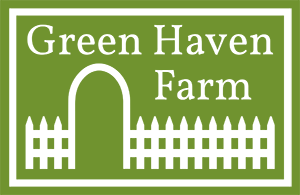Tasks for the November Garden
By Aylce Goldman and Cathrine St.Clair
The growing season may be winding down but there are plenty of opportunities to enjoy your property this month. A few tasks to consider...
Take a stroll around to assess what grew well, what may have struggled, and needs to moved, empty spots that will need a new plant next year. Make notes for future reference or else document the needs with your phone camera.
Harvest seed pods, dried ornamental grass tops, pine cones, interesting twigs, sweet gum balls, and other potential natural holiday decorations. Please leave a quantity for wildlife to enjoy throughout the winter but if you are using these items outside they can still nosh on them in a wreath or porch pot.
Bring inside any delicate garden ornaments. Freezing temperatures and winter weather along with winds and maybe a falling tree branch can do damage to beloved garden art.
For not yet planted plants, assess your possibilities for overwintering if they just can’t make it in the ground. Group together near a wall for protection but make sure they still receive moisture. You can tuck them into a compost pile, wrap pots with bubble wrap and overwinter in a larger planter, or if you can’t deal with so many….gift them to another gardener!
Finish planting spring bulbs. Bulbs can be planted until January as long as the ground is not frozen.
Keep spreading downed leaves around shrubs and trees. Leaves are nature’s soil blanket and soil builder. Many pollinators and amphibians overwinter in leaves so next season’s spring peeper may be snuggled up under your shrubs!
Make sure evergreens that have been planted in the last two years have sufficient water going into winter. Evergreens lose moisture through their needles all year round and if the ground is frozen, this depletes their reserves and browning or death can occur.
Compost in place. If your limp Hosta leaves are challenging your garden aesthetics, cut them down and leave them on the ground. No worries as they will soon decompose right there and enrich your soil doing it. This works best for softer items but can be done if woodies are cut up in small pieces.
If you are planning a new garden bed or the expansion of an existing one next year, get a head start now. Cover turf areas with newspaper. Top that with alternate layers of leaves and green compostable items like grass clippings and vegetable waste to a height of about 18 inches. Come spring, the area will much more friendly for planting.
For bird lovers; clean out birdhouses and then add bits of soft fabric (natural fibers) for overwintering. On bitter cold nights birds will seek shelter in houses and often with other birds to help retain heat. In the spring the bits of fabric can be placed on the ground for nest building.
If you do not already have a bird feeder on your property, consider installing one for your important garden assistants. They are still inspecting your trees for harmful insects and watching colorful bird antics in the winter months makes for great entertainment. Feeders provide supplemental food when winter conditions are harsh. Buy quality bird seed. Something you would like if you were a bird!


